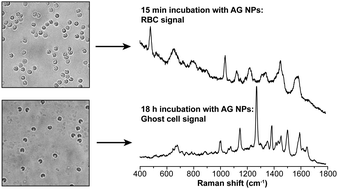
The group used small nanoparticle concentrations compared to the concentration of hemoglobin molecules, similar to the situation upon nanoparticle entry into the hemoglobin-rich environment of the red blood cell. They demonstrated the dependence of the SERS spectra on the type and size of nanoparticle used as the SERS substrate. They confirmed that the nanoparticles interact with blood cells via interaction with hemoglobin and are also in contact with many other red blood cell components. Interestingly, the evidence shows nanoparticle-induced structural changes in the lipid bilayer of the red blood cells.
Understanding these interactions are of great importance, as silver nanoparticles, found everywhere in everyday life, display high cytotoxicity. The uptake of nanoparticles into red blood is also intriguing as it does not occur by endocytosis.
Read the detail in this article today:
SERS reveals the specific interaction of silver and gold nanoparticles with hemoglobin and red blood cell components
Daniela Drescher, Tina Büchner, Don McNaughton and Janina Kneipp
DOI: 10.1039/C3CP43883J
If you enjoyed this article, keep an eye out for our themed issue on plasmonics and spectroscopy, which is soon to be published.










